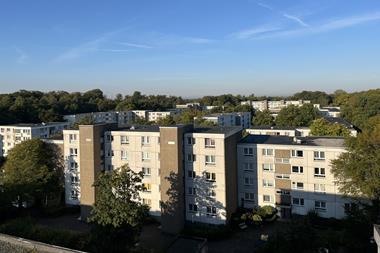GLOBAL - The American-German property company Jamestown has moved into the institutional fund landscape, launching a $900m (€690m) vehicle with the acquisition of three trophy assets and backed by pension funds in the US, Australia and Europe.
The group, previously focused on closed-ended funds aimed at German retail clients, said it hoped to diversify its capital base with the move and take advantage of depressed asset values on back of the current market environment.
It opted against a blind pool launch and instead purchased in advance three assets from retail funds it was liquidating - with One Times Square in New York acquired from Jamestown 18 by the new Jamestown Premier Property Fund (JPPF).
The fund is targeting core-plus assets in two dozen US cities including Boston and Washington D.C.
In addition to the One Times Square, a second property in New York’s meatpacking district - Chelsea Market - was bought, with the mixed-use Pacific Place in San Francisco the final acquisition, accounting for the fund’s $900m value.
Speaking to IP Real Estate, Jamestown chief executive Christoph Kahl noted the “unique” situation the company was in, whereby several of its funds had reached or passed their maturation dates of a 7 - 12 year holding period.
“For example, the One Times Square fund started in 1997 and we’ve gone over the 12 year period already,” he said, noting that this allowed the company to provide JPPF with a “trophy” property from launch.
He said that the sale of the properties from one Jamestown fund to the other were conducted in a “very transparent” fashion, saying independent valuations were conducted and then put to both the institutional and retail clients.
“Our private clients were given the choice to sell at the fixed price to our institutional fund, or to go into the open market and sell for the highest bid. Over 80% voted for the sale at the fixed price,” Kahl said.
The company was unable to disclose details of the pension funds providing the majority of equity - with Jamestown partners contributing $60m - but industry sources told IP Real Estate that several US state pension funds contributed up to $70m each, while a number of European pension schemes contributed under $50m each.
Additionally, it is understood that the commitment by an unnamed Australian Superannuation fund marked its first foray into the US property market.
Kahl said he expected any further purchases, should JPPF raise further capital, to come from outside its previous portfolio as its liquidation process was now complete and the company was only left with assets acquired in 2011.
The company said it hoped to capitalise on the depressed asset values currently in the market, which combined with pending debt maturity could allow for “attractive” acquisitions that it would expect to hold for up to 12 years.
Kahl ruled out an expansion beyond Jamestown’s domestic market into neighbouring Canada, saying that it was a small market already controlled by a number of domestic companies and said further institutional fund launches were unlikely.
“This will be our exclusive vehicle for core and core-plus properties in the US for the foreseeable future. I don’t think there will be a Fund II or III, at least not in this property type.”
JPPF does not mark Jamestown’s first foray into the institutional space, having teamed up with Griffin Realty Advisors on the Griffin Realty Fund in 2007.












